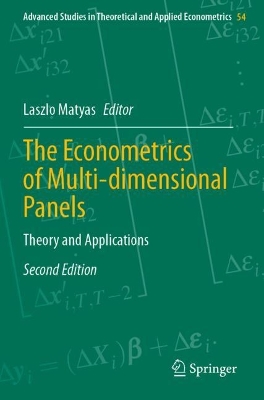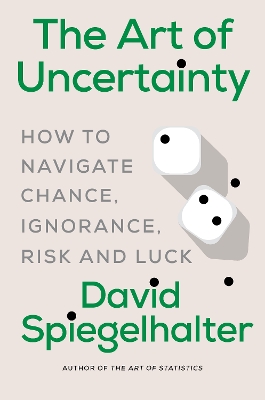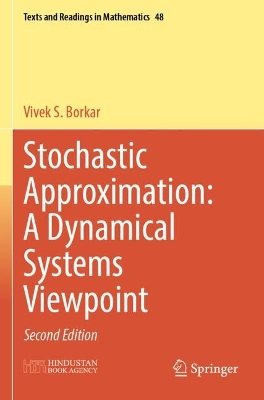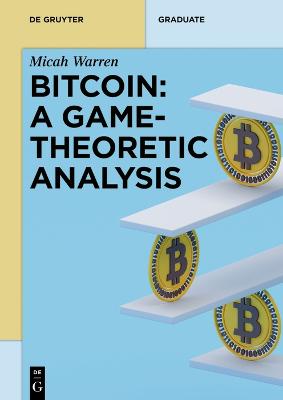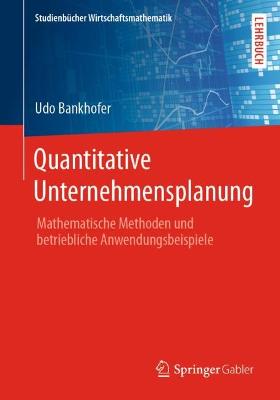Arbitrage and Rational Decisions
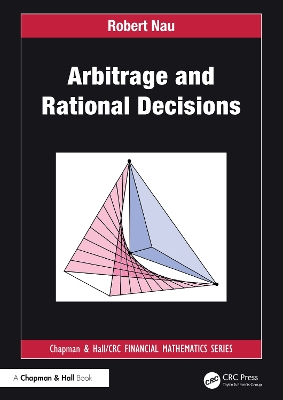 portes grátis
portes grátis
Arbitrage and Rational Decisions
Nau, Robert
Taylor & Francis Ltd
01/2025
328
Dura
9781032863511
15 a 20 dias
Descrição não disponível.
1 Introduction
1.1 Social physics
1.2 The importance of having money
1.3 The impossibility of measuring beliefs
1.4 Risk-neutral probabilities
1.5 No-arbitrage as common knowledge of rationality
1.6 A road map of the book
2 Preference axioms, fixed points, and separating hyperplanes
2.1 The axiomatization of probability and utility
2.2 The independence axiom
2.3 The difficulty of measuring utility
2.4 The fixed point theorem
2.5 The separating hyperplane theorem
2.6 Primal/dual linear programs to search for arbitrage opportunities
2.7 No-arbitrage and the fundamental theorems of rational choice
3 Subjective probability
3.1 Elicitation of beliefs
3.2 A 3-state example of probability assessment
3.3 The fundamental theorem of subjective probability
3.4 Bayes' theorem and (not) learning over time
3.5 Incomplete preferences and imprecise probabilities
3.6 Continuous probability distributions
3.7 Prelude to game theory: no-ex-post-arbitrage and zero probabilities
4 Expected utility
4.1 Elicitation of tastes
4.2 The fundamental theorem of expected utility
4.3 Continuous payoff distributions and measurement of risk aversion
4.4 The fundamental theorem of utilitarianism (social aggregation)
5 Subjective expected utility
5.1 Joint elicitation of beliefs and tastes
5.2 The fundamental theorem of subjective expected utility
5.3 (In)separability of beliefs and tastes (state-dependent utility)
5.4 Incomplete preferences with state-dependent utilities
5.5 Representation by sets of probability/utility pairs
6 State-preference theory, risk aversion, and risk-neutral probabilities
6.1 The state-preference framework for choice under uncertainty
6.2 Examples of utility functions for risk-averse agents
6.3 The fundamental theorem of state-preference theory
6.4 Risk-neutral probabilities and their matrix of derivatives
6.5 The risk aversion matrix
6.6 A generalized risk premium measure
6.7 Risk-neutral probabilities and the Slutsky matrix
7 Ambiguity and source-dependent risk aversion
7.1 Introduction
7.2 Ellsberg's paradox and smooth non-expected-utility preferences
7.3 Source-dependent utility revealed by risk-neutral probabilities
7.4 A 3x3 example of a two-source model
7.5 The second-order-uncertainty smooth model
7.6 Discussion
7.7 Some history of non-expected-utility
8 Noncooperative games
8.1 Introduction
8.2 Solution of a 1-player game by no-arbitrage
8.3 Solution of a 2-player game by no-arbitrage
8.4 Games of coordination: chicken, battle of the sexes, and stag hunt
8.5 An overview of correlated equilibrium and its properties
8.6 The fundamental theorem of noncooperative games
8.7 Examples of Nash and correlated equilibria
8.8 Correlated equilibrium vsNash equilibrium and rationalizability
8.9 Risk aversion and risk-neutral equilibria
8.10 Playing a new game
8.11 Games of incomplete information
8.12 Discussion
9 Asset pricing
9.1 Introduction
9.2 Risk-neutral probabilities and the fundamental theorem
9.3 The multivariate normal/exponential/quadratic model
9.4 Market aggregation of means and covariances
9.5 The subjective capital asset pricing model (CAPM)
10 Summary of the fundamental theorems and models
10.1 Perspectives on the foundations of rational choice theory
10.2 Axioms for preferences and acceptable bets
10.3 Subjective probability theory
10.4 Expected utility theory
10.5 Subjective expected utility theory
10.6 State-preference theory and risk-neutral probabilities
10.7 Source-dependent utility and ambiguity aversion
10.8 Noncooperative game theory
10.9 Asset pricing theory
11 Linear programming models for seeking arbitrage opportunities
11.1 LP models for arbitrage in subjective probability theory
11.2 LP model for for arbitrage in expected utility theory
11.3 LP model for for arbitrage in subjective expected utility theory
11.4 LP model for ex-post-arbitrage and correlated equilibria in games
11.5 LP model for arbitrage in asset pricing theory
12 Selected proofs
Bibliography
Index
1.1 Social physics
1.2 The importance of having money
1.3 The impossibility of measuring beliefs
1.4 Risk-neutral probabilities
1.5 No-arbitrage as common knowledge of rationality
1.6 A road map of the book
2 Preference axioms, fixed points, and separating hyperplanes
2.1 The axiomatization of probability and utility
2.2 The independence axiom
2.3 The difficulty of measuring utility
2.4 The fixed point theorem
2.5 The separating hyperplane theorem
2.6 Primal/dual linear programs to search for arbitrage opportunities
2.7 No-arbitrage and the fundamental theorems of rational choice
3 Subjective probability
3.1 Elicitation of beliefs
3.2 A 3-state example of probability assessment
3.3 The fundamental theorem of subjective probability
3.4 Bayes' theorem and (not) learning over time
3.5 Incomplete preferences and imprecise probabilities
3.6 Continuous probability distributions
3.7 Prelude to game theory: no-ex-post-arbitrage and zero probabilities
4 Expected utility
4.1 Elicitation of tastes
4.2 The fundamental theorem of expected utility
4.3 Continuous payoff distributions and measurement of risk aversion
4.4 The fundamental theorem of utilitarianism (social aggregation)
5 Subjective expected utility
5.1 Joint elicitation of beliefs and tastes
5.2 The fundamental theorem of subjective expected utility
5.3 (In)separability of beliefs and tastes (state-dependent utility)
5.4 Incomplete preferences with state-dependent utilities
5.5 Representation by sets of probability/utility pairs
6 State-preference theory, risk aversion, and risk-neutral probabilities
6.1 The state-preference framework for choice under uncertainty
6.2 Examples of utility functions for risk-averse agents
6.3 The fundamental theorem of state-preference theory
6.4 Risk-neutral probabilities and their matrix of derivatives
6.5 The risk aversion matrix
6.6 A generalized risk premium measure
6.7 Risk-neutral probabilities and the Slutsky matrix
7 Ambiguity and source-dependent risk aversion
7.1 Introduction
7.2 Ellsberg's paradox and smooth non-expected-utility preferences
7.3 Source-dependent utility revealed by risk-neutral probabilities
7.4 A 3x3 example of a two-source model
7.5 The second-order-uncertainty smooth model
7.6 Discussion
7.7 Some history of non-expected-utility
8 Noncooperative games
8.1 Introduction
8.2 Solution of a 1-player game by no-arbitrage
8.3 Solution of a 2-player game by no-arbitrage
8.4 Games of coordination: chicken, battle of the sexes, and stag hunt
8.5 An overview of correlated equilibrium and its properties
8.6 The fundamental theorem of noncooperative games
8.7 Examples of Nash and correlated equilibria
8.8 Correlated equilibrium vsNash equilibrium and rationalizability
8.9 Risk aversion and risk-neutral equilibria
8.10 Playing a new game
8.11 Games of incomplete information
8.12 Discussion
9 Asset pricing
9.1 Introduction
9.2 Risk-neutral probabilities and the fundamental theorem
9.3 The multivariate normal/exponential/quadratic model
9.4 Market aggregation of means and covariances
9.5 The subjective capital asset pricing model (CAPM)
10 Summary of the fundamental theorems and models
10.1 Perspectives on the foundations of rational choice theory
10.2 Axioms for preferences and acceptable bets
10.3 Subjective probability theory
10.4 Expected utility theory
10.5 Subjective expected utility theory
10.6 State-preference theory and risk-neutral probabilities
10.7 Source-dependent utility and ambiguity aversion
10.8 Noncooperative game theory
10.9 Asset pricing theory
11 Linear programming models for seeking arbitrage opportunities
11.1 LP models for arbitrage in subjective probability theory
11.2 LP model for for arbitrage in expected utility theory
11.3 LP model for for arbitrage in subjective expected utility theory
11.4 LP model for ex-post-arbitrage and correlated equilibria in games
11.5 LP model for arbitrage in asset pricing theory
12 Selected proofs
Bibliography
Index
Este título pertence ao(s) assunto(s) indicados(s). Para ver outros títulos clique no assunto desejado.
Game theory;decision science;economics;optimization
1 Introduction
1.1 Social physics
1.2 The importance of having money
1.3 The impossibility of measuring beliefs
1.4 Risk-neutral probabilities
1.5 No-arbitrage as common knowledge of rationality
1.6 A road map of the book
2 Preference axioms, fixed points, and separating hyperplanes
2.1 The axiomatization of probability and utility
2.2 The independence axiom
2.3 The difficulty of measuring utility
2.4 The fixed point theorem
2.5 The separating hyperplane theorem
2.6 Primal/dual linear programs to search for arbitrage opportunities
2.7 No-arbitrage and the fundamental theorems of rational choice
3 Subjective probability
3.1 Elicitation of beliefs
3.2 A 3-state example of probability assessment
3.3 The fundamental theorem of subjective probability
3.4 Bayes' theorem and (not) learning over time
3.5 Incomplete preferences and imprecise probabilities
3.6 Continuous probability distributions
3.7 Prelude to game theory: no-ex-post-arbitrage and zero probabilities
4 Expected utility
4.1 Elicitation of tastes
4.2 The fundamental theorem of expected utility
4.3 Continuous payoff distributions and measurement of risk aversion
4.4 The fundamental theorem of utilitarianism (social aggregation)
5 Subjective expected utility
5.1 Joint elicitation of beliefs and tastes
5.2 The fundamental theorem of subjective expected utility
5.3 (In)separability of beliefs and tastes (state-dependent utility)
5.4 Incomplete preferences with state-dependent utilities
5.5 Representation by sets of probability/utility pairs
6 State-preference theory, risk aversion, and risk-neutral probabilities
6.1 The state-preference framework for choice under uncertainty
6.2 Examples of utility functions for risk-averse agents
6.3 The fundamental theorem of state-preference theory
6.4 Risk-neutral probabilities and their matrix of derivatives
6.5 The risk aversion matrix
6.6 A generalized risk premium measure
6.7 Risk-neutral probabilities and the Slutsky matrix
7 Ambiguity and source-dependent risk aversion
7.1 Introduction
7.2 Ellsberg's paradox and smooth non-expected-utility preferences
7.3 Source-dependent utility revealed by risk-neutral probabilities
7.4 A 3x3 example of a two-source model
7.5 The second-order-uncertainty smooth model
7.6 Discussion
7.7 Some history of non-expected-utility
8 Noncooperative games
8.1 Introduction
8.2 Solution of a 1-player game by no-arbitrage
8.3 Solution of a 2-player game by no-arbitrage
8.4 Games of coordination: chicken, battle of the sexes, and stag hunt
8.5 An overview of correlated equilibrium and its properties
8.6 The fundamental theorem of noncooperative games
8.7 Examples of Nash and correlated equilibria
8.8 Correlated equilibrium vsNash equilibrium and rationalizability
8.9 Risk aversion and risk-neutral equilibria
8.10 Playing a new game
8.11 Games of incomplete information
8.12 Discussion
9 Asset pricing
9.1 Introduction
9.2 Risk-neutral probabilities and the fundamental theorem
9.3 The multivariate normal/exponential/quadratic model
9.4 Market aggregation of means and covariances
9.5 The subjective capital asset pricing model (CAPM)
10 Summary of the fundamental theorems and models
10.1 Perspectives on the foundations of rational choice theory
10.2 Axioms for preferences and acceptable bets
10.3 Subjective probability theory
10.4 Expected utility theory
10.5 Subjective expected utility theory
10.6 State-preference theory and risk-neutral probabilities
10.7 Source-dependent utility and ambiguity aversion
10.8 Noncooperative game theory
10.9 Asset pricing theory
11 Linear programming models for seeking arbitrage opportunities
11.1 LP models for arbitrage in subjective probability theory
11.2 LP model for for arbitrage in expected utility theory
11.3 LP model for for arbitrage in subjective expected utility theory
11.4 LP model for ex-post-arbitrage and correlated equilibria in games
11.5 LP model for arbitrage in asset pricing theory
12 Selected proofs
Bibliography
Index
1.1 Social physics
1.2 The importance of having money
1.3 The impossibility of measuring beliefs
1.4 Risk-neutral probabilities
1.5 No-arbitrage as common knowledge of rationality
1.6 A road map of the book
2 Preference axioms, fixed points, and separating hyperplanes
2.1 The axiomatization of probability and utility
2.2 The independence axiom
2.3 The difficulty of measuring utility
2.4 The fixed point theorem
2.5 The separating hyperplane theorem
2.6 Primal/dual linear programs to search for arbitrage opportunities
2.7 No-arbitrage and the fundamental theorems of rational choice
3 Subjective probability
3.1 Elicitation of beliefs
3.2 A 3-state example of probability assessment
3.3 The fundamental theorem of subjective probability
3.4 Bayes' theorem and (not) learning over time
3.5 Incomplete preferences and imprecise probabilities
3.6 Continuous probability distributions
3.7 Prelude to game theory: no-ex-post-arbitrage and zero probabilities
4 Expected utility
4.1 Elicitation of tastes
4.2 The fundamental theorem of expected utility
4.3 Continuous payoff distributions and measurement of risk aversion
4.4 The fundamental theorem of utilitarianism (social aggregation)
5 Subjective expected utility
5.1 Joint elicitation of beliefs and tastes
5.2 The fundamental theorem of subjective expected utility
5.3 (In)separability of beliefs and tastes (state-dependent utility)
5.4 Incomplete preferences with state-dependent utilities
5.5 Representation by sets of probability/utility pairs
6 State-preference theory, risk aversion, and risk-neutral probabilities
6.1 The state-preference framework for choice under uncertainty
6.2 Examples of utility functions for risk-averse agents
6.3 The fundamental theorem of state-preference theory
6.4 Risk-neutral probabilities and their matrix of derivatives
6.5 The risk aversion matrix
6.6 A generalized risk premium measure
6.7 Risk-neutral probabilities and the Slutsky matrix
7 Ambiguity and source-dependent risk aversion
7.1 Introduction
7.2 Ellsberg's paradox and smooth non-expected-utility preferences
7.3 Source-dependent utility revealed by risk-neutral probabilities
7.4 A 3x3 example of a two-source model
7.5 The second-order-uncertainty smooth model
7.6 Discussion
7.7 Some history of non-expected-utility
8 Noncooperative games
8.1 Introduction
8.2 Solution of a 1-player game by no-arbitrage
8.3 Solution of a 2-player game by no-arbitrage
8.4 Games of coordination: chicken, battle of the sexes, and stag hunt
8.5 An overview of correlated equilibrium and its properties
8.6 The fundamental theorem of noncooperative games
8.7 Examples of Nash and correlated equilibria
8.8 Correlated equilibrium vsNash equilibrium and rationalizability
8.9 Risk aversion and risk-neutral equilibria
8.10 Playing a new game
8.11 Games of incomplete information
8.12 Discussion
9 Asset pricing
9.1 Introduction
9.2 Risk-neutral probabilities and the fundamental theorem
9.3 The multivariate normal/exponential/quadratic model
9.4 Market aggregation of means and covariances
9.5 The subjective capital asset pricing model (CAPM)
10 Summary of the fundamental theorems and models
10.1 Perspectives on the foundations of rational choice theory
10.2 Axioms for preferences and acceptable bets
10.3 Subjective probability theory
10.4 Expected utility theory
10.5 Subjective expected utility theory
10.6 State-preference theory and risk-neutral probabilities
10.7 Source-dependent utility and ambiguity aversion
10.8 Noncooperative game theory
10.9 Asset pricing theory
11 Linear programming models for seeking arbitrage opportunities
11.1 LP models for arbitrage in subjective probability theory
11.2 LP model for for arbitrage in expected utility theory
11.3 LP model for for arbitrage in subjective expected utility theory
11.4 LP model for ex-post-arbitrage and correlated equilibria in games
11.5 LP model for arbitrage in asset pricing theory
12 Selected proofs
Bibliography
Index
Este título pertence ao(s) assunto(s) indicados(s). Para ver outros títulos clique no assunto desejado.

